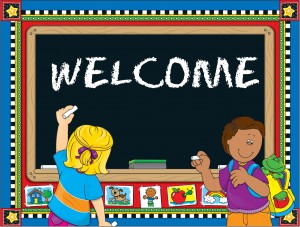Encouraging Collaboration in the Classroom
Every child has his own unique needs and individual learning style. Encouraging collaboration amongst parents, teachers, and speech therapists can help a child learn more effectively in an environment that best suits his needs.
Considerations
While most educators do indeed have a child’s best interests in mind, not all may welcome the idea of collaboration. Some may resist the idea because it modifies the current curriculum or because they are unsure where collaboration fits in with school policies. Teachers are also notoriously overworked. An article posted by the National Education Association pointed out that for best results in special education, school districts ought to designate daily or weekly allotments of time for collaboration in order to meet the needs of a child’s Individualized Education Program (IEP).
How to Begin Networking
It’s best to begin advocating for your child gradually to avoid creating friction. Attend a Parent-Teacher Association (PTA) meeting and network with the school’s administrative staff. Introduce the idea of collaboration. Make a habit of chatting with your child’s teacher when you pick him up from school. Volunteer to work in the classroom for a career day or to be a chaperone for a field trip.
An open house is a great networking opportunity. Not only can you meet with your child’s teacher, but you can also meet other parents who might also have a child with special needs. Ask them about their efforts toward collaboration. Determine whether there might be an interest in a concerted effort toward changing the administration’s policy to better suit the needs of special education children. For example, other parents might agree that the administration should set aside time and resources for collaboration amongst parents, teachers, and speech therapists.
Meeting with the Teacher
If a particular teacher does not have an open-door policy, make an appointment to discuss your child’s performance and his speech disorder. Your child’s teacher should have reviewed his IEP. At the very least, the teacher should have been informed about any required classroom accommodations.
Discuss your child’s unique needs and how his goals might be met in the classroom. Talk about areas that could use improvement. For example, your child might readily understand the material, but he has difficulty finding the words to answer a question (an expressive language disorder). Discuss your child’s SLP’s recommendations for helping your child communicate more effectively. Introduce the idea of having all three of you sit down to discuss your child’s needs and how to best help him.
Meeting with the Speech Therapist
It’s likely that you converse more frequently with your child’s speech therapist than with his teacher – after all, you bring your child to speech therapy sessions. Networking isn’t quite as essential here; many speech therapists are already accustomed to working with teachers. Your child’s SLP may even know some of the teachers in his school because she works with other children in the area.
Ask the SLP if she is willing to meet with your child’s teacher and yourself. Ideally, the speech therapist can instruct the teacher on the most effective methods of communication for your child. The teacher could also be provided with lists of target sounds and words that your child is working on. Your child’s teacher may then adapt these words to the curriculum used in the classroom to help accelerate his progress.






Excellent post. I was looking at continuously this blog and I’m amazed! Very useful information specially the last part :) I care for such info a lot. I was seeking this certain information for a long time. Many thanks and good luck, education